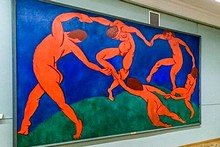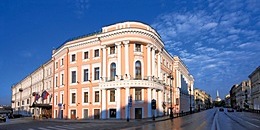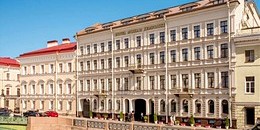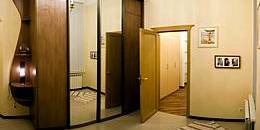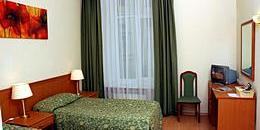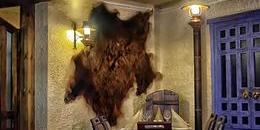General Staff Building
This spectacular, crescent-shaped neoclassical building, most famous for its central triumphal arch, which brings pedestrians out on to Palace Square from Nevsky Prospekt, was designed by renowned St. Petersburg architect Carlo Rossi and completed in 1829. Before the Revolution it housed not only the offices of the General Staff, in the East Wing, but also the Tsarist Foreign Ministry and Ministry of Finance in the West Wing. Now, it is home to one of the most celebrated and popular parts of the Hermitage's collection - the art of the impressionists and post-impressionists.
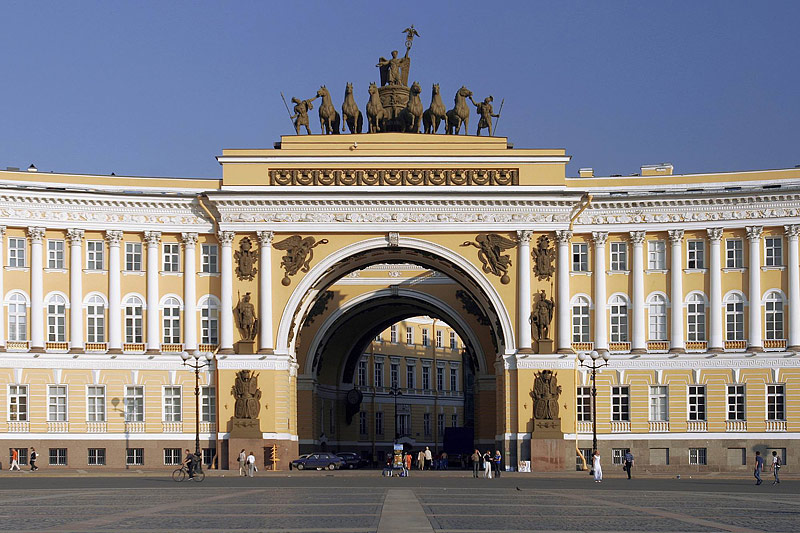
Constructed between 1819 and 1829, the General Staff Building is recognised as one of the best examples of Empire-style architecture in Russia. The curving facade of the building stretches to almost 600 metres and stands four storeys high. The west and east wings are joined by a tripartite which is crowned with a sculpture of the Goddess of Glory in her Chariot of Victory. The sculpture by Stepan Pimenov and Vasily Demuth-Malinovsky is to commemorate the Russian victory over Napoleonic France in the Patriotic War of 1812. You can read more about the history of the building here.
The Hermitage took possession of the east wing of the building in 1993 and it was later decided to house the museum's collections of 19th and 20th century art there. Work on renovating and adapting the building to fit the purpose was finished in 2014. The work was by the renowned Studio 44 Architectural Studio of St. Petersburg. Inside the building uses a system of enfilades (a suite of rooms with doorways in line with each other) to tie the exhibition spaces together. The main enfilade is monumental in scale, beginning in the Grand Entrance and running through the central Grand Enfilade of atrium-shaped inner courts in which there are sculpture gardens.
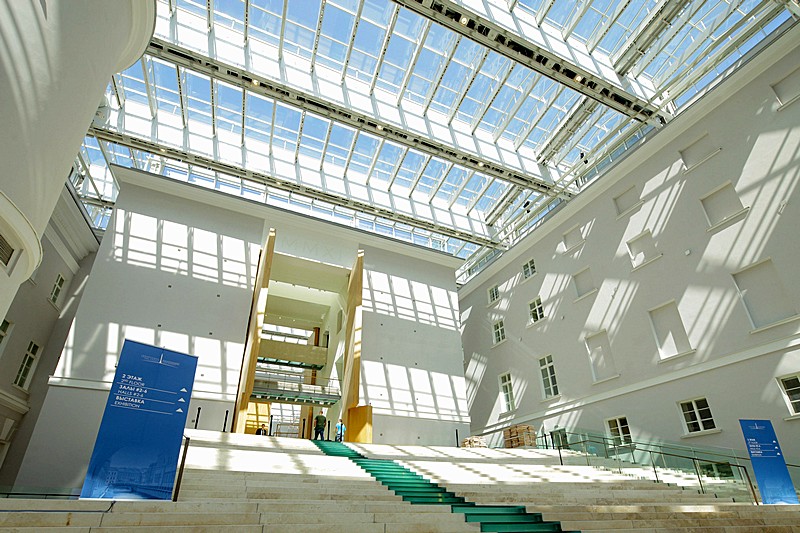
The museum's second floor houses a permanent display, The Age of Art Nouveau, an amazing collection of gifts to the tsars, and a themed exhibition about the Ministry of Finance of the Russian Empire, once situated in the building.
On the third floor are to be found three exhibitions: Under the Sign of the Eagle - The Art of Empire, which offers a comparison of French and Russian decorative art and costume of the age; French Painting and Sculpture of the 19th Century; Western European Art of the 19th Century (from Germany, Holland, Belgium) and the 18th century Russian Guards Museum. Also included on the third floor is a display which follows the history of the Ministry of Foreign Affairs of the Russian Empire, which also used to be an occupant of this part of the General Staff Building.
The fourth floor of the General Staff Building is given over to works of the Impressionist and Post-impressionists. This collection, though controversial in its origins - the majority of works were seized from territories occupied by the Red Army during and after the Second World War, and their presence in the Hermitage vaults was only officially aknowledged in 1995 - is nonetheless one of the Hermitage's biggest draws and, unlike parts of the collections from earlier periods, is of remarkably consistent quality. There is also a collection of pre-Revolutionary Russian art which includes works by Vasiliy Kandinskiy and Kazimir Malevich.
| Location: | 6/8, Dvortsovaya Ploshchad |
|---|---|
| Metro: | Admiralteyskaya |
| Telephone: | +7 (812) 333-2655 |
| Opening hours: | Daily from 10.30am to 6pm (to 9pm on Wednesdays and Fridays). Closed on Monday. |
| Admission: | RUB 300 (or on the RUB 600 combined ticket with the main museum complex). |
| Photo and video: | Non-flash still photography is permitted. No video. |
| Accessibility: | Wheelchair accessible. |

